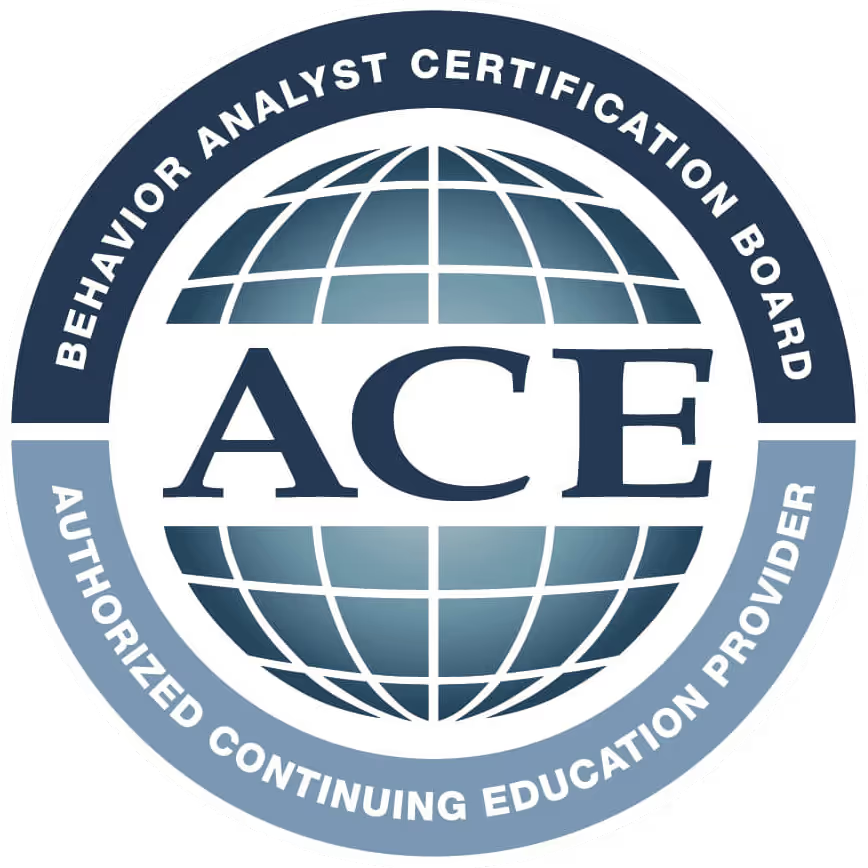
Effective Therapy Models
Exploring the Landscape of Psychotherapy Approaches
Introduction to Therapy Models
In the complex realm of mental health treatment, understanding the diverse landscape of psychotherapy is essential for both professionals and clients. With a vast array of therapy models accessible today, it can be challenging to discern the most effective approach for individual needs. This article delves into the major types and benefits of psychotherapy, offering insight into evidence-based practices and their applications in treating various mental health conditions.
Understanding Major Psychotherapy Types
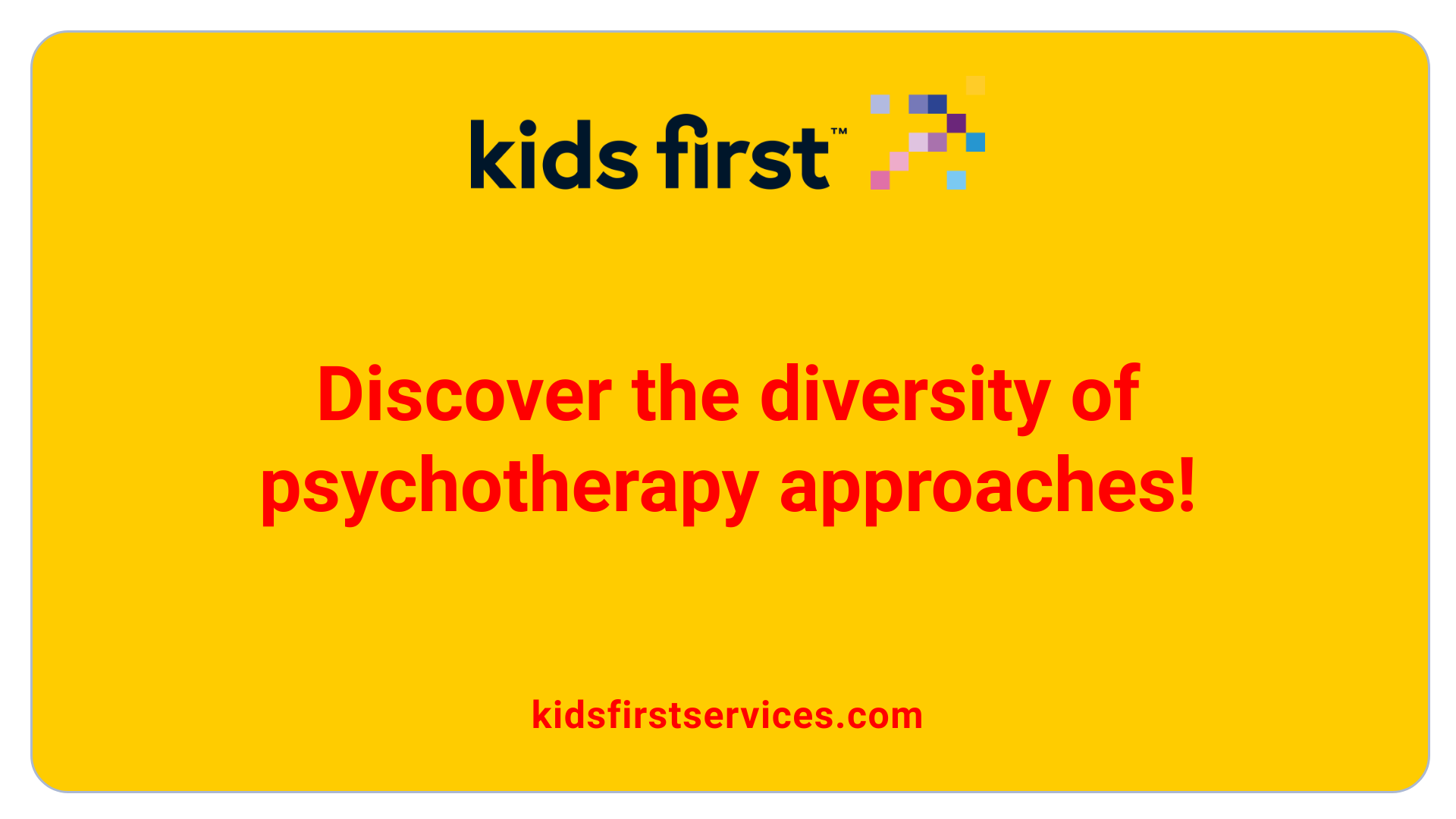
What are the major types of psychotherapy?
There are several major types of psychotherapy commonly used today, each with unique approaches. The primary categories include:
- Cognitive Behavioral Therapy (CBT): This is effective for treating various conditions by addressing negative thought patterns, making it widely applicable for anxiety disorders, depression, and substance use disorders.
- Dialectical Behavior Therapy (DBT): Originally developed for borderline personality disorder, DBT emphasizes emotional regulation and interpersonal effectiveness, helping individuals develop coping skills and manage intense emotions.
- Humanistic Therapy: This approach focuses on personal growth and self-acceptance. Client-Centered Therapy within this category emphasizes the client's autonomy in the therapeutic process, promoting self-discovery.
- Emotion-Focused Therapy (EFT): Particularly beneficial for couples, EFT enhances emotional awareness and attachment, aiming to strengthen emotional connections.
- Play Therapy: This method is especially for children, allowing them to express feelings and cope with stress through play.
- Integrated Therapies: These involve blending various therapeutic methods tailored to the specific needs of the client, which can enhance treatment effectiveness.
Specific approaches and their benefits
The effectiveness of each psychotherapy approach often depends on the client's needs and conditions. Here are some specific therapies and their benefits:
| Therapy Type | Focus | Benefits |
|---|---|---|
| Cognitive Behavioral Therapy (CBT) | Thought patterns and behaviors | Effective for anxiety, depression, and PTSD |
| Dialectical Behavior Therapy (DBT) | Emotional regulation | Helpful for borderline personality disorder and emotional instability |
| Client-Centered Therapy | Client autonomy and self-discovery | Fosters personal growth and self-acceptance |
| Emotion-Focused Therapy (EFT) | Emotional awareness in relationships | Benefits couples by improving emotional bonds |
| Play Therapy | Expression through play | Helps children deal with feelings and behavior issues |
| Integrated Therapies | Customizable approach | Addresses a wide range of client issues effectively |
These various approaches reflect the diversity within psychotherapy, ensuring there is a suitable method for clients with different mental health needs.
Defining a Therapeutic Model
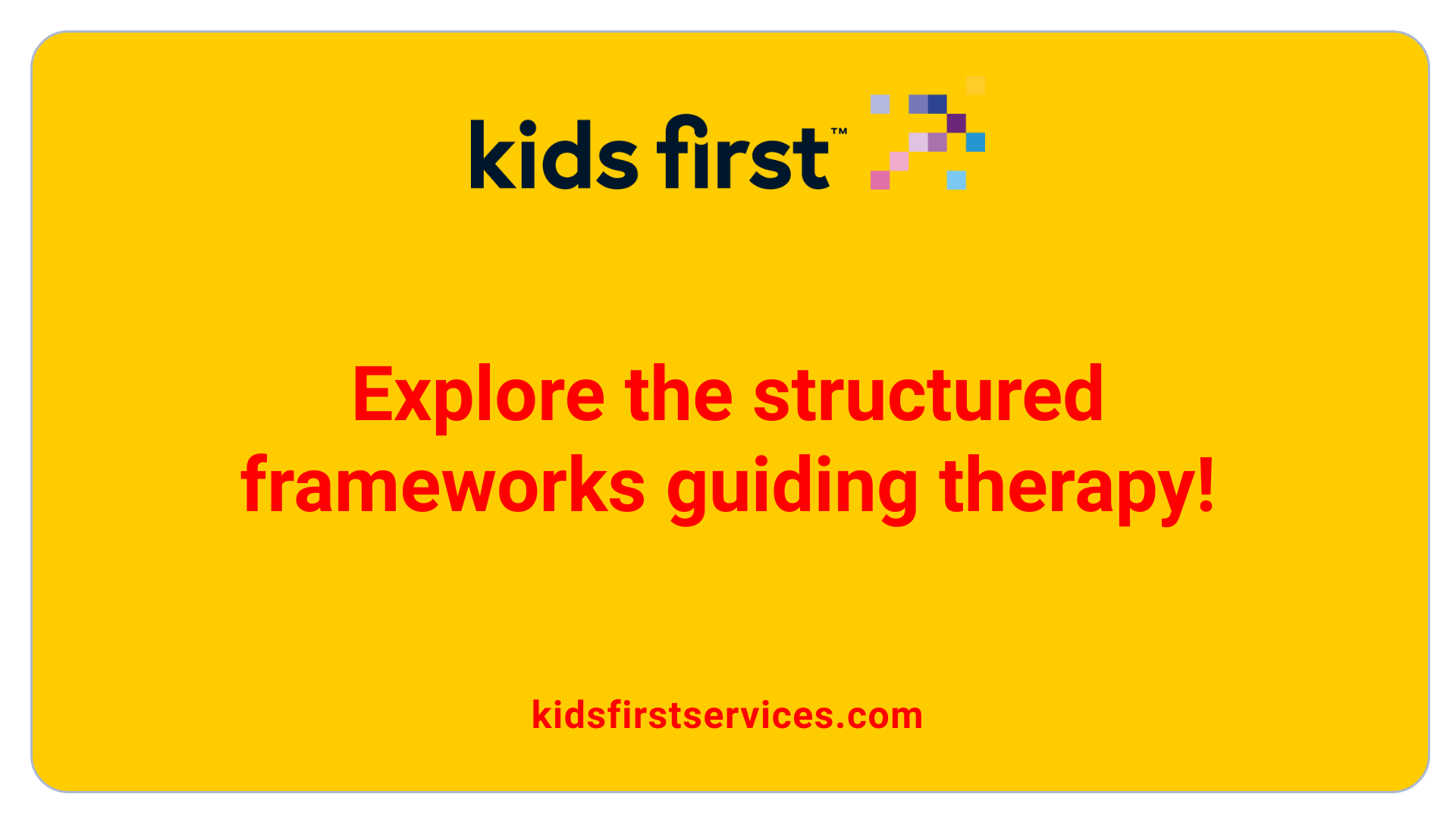
What is a therapeutic model in psychotherapy?
A therapeutic model in psychotherapy refers to a structured approach that guides therapists in effectively working with clients. These models are built on researched guidelines and evidence-based practices that seek to address specific mental health issues. The choice of model is crucial for achieving desired therapeutic outcomes and typically depends on fostering a strong therapeutic relationship.
Some commonly used therapeutic models include:
- Cognitive Behavioral Therapy (CBT): Tailored for anxiety, depression, and substance use disorders, CBT focuses on the interplay between thoughts, feelings, and behaviors, helping clients reshape negative thought patterns.
- Dialectical Behavior Therapy (DBT): Originally designed for borderline personality disorder (BPD), DBT integrates acceptance with change strategies to aid those struggling with emotional regulation.
- Eye Movement Desensitization and Reprocessing (EMDR): Primarily used for individuals with PTSD, EMDR leverages guided eye movements to facilitate the processing of traumatic memories.
- Schema Therapy: This integrates cognitive, behavioral, and experiential techniques to help clients change lifelong patterns that impact their self-perception and relationships.
Other models, such as Interpersonal Therapy (IPT) and Acceptance and Commitment Therapy (ACT), focus on enhancing interpersonal relationships and promoting mindfulness to mitigate distress, respectively.
Why is the choice of a therapeutic model significant?
Selecting the appropriate model not only addresses the client’s immediate needs but also considers their personal background and the broader contextual factors that affect their mental health. Models like integrative therapy emphasize collaboration and customization, integrating various theoretical frameworks to ensure a holistic approach to treatment.
In summary, therapeutic models are more than just frameworks; they're essential tools that guide the therapeutic process, allowing for a tailored approach designed to meet the unique needs of each client.
Choosing the Right Therapy Method
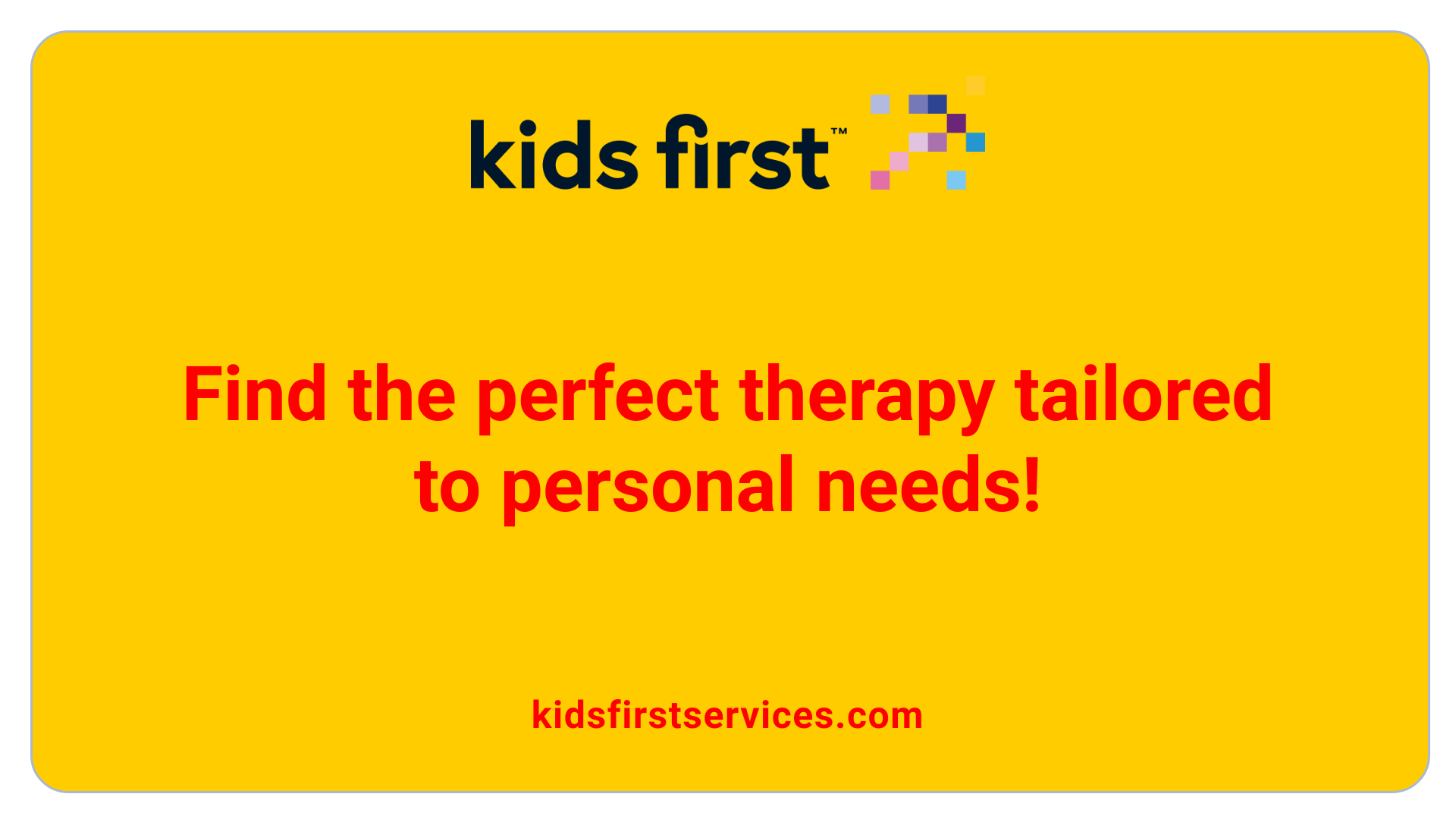
How can someone choose the right therapy method based on individual needs?
Choosing the right therapy method involves a careful assessment of the specific mental health issues that an individual is facing. For example, Cognitive Behavioral Therapy (CBT) is particularly effective for treating anxiety disorders, which impact millions of adults. This therapy helps clients identify and change negative thought patterns that contribute to their anxiety.
For those who need support in emotional regulation, Dialectical Behavior Therapy (DBT) provides essential skills tailored to manage strong emotions and improve interpersonal relationships. This approach is especially beneficial for individuals struggling with borderline personality disorder.
If relationship dynamics are a major source of distress, Interpersonal Therapy (IPT) can enhance social interactions and reduce anxiety by focusing on improving personal relationships. On the other hand, if trauma is at the forefront of one's issues, techniques like Eye Movement Desensitization and Reprocessing (EMDR) are valuable for processing and healing from traumatic memories.
For children, Play Therapy is an excellent choice. It creates a safe space for emotional expression and helps resolve conflicts through play, allowing children to navigate their feelings in a familiar and comfortable setting.
Considering individual preferences and the nature of the issues is crucial. Therapy approaches may vary in focus and techniques. Tailoring therapy to meet personal needs can enhance effectiveness, leading to more satisfying outcomes for those seeking help.
Considerations for individual needs
When selecting a therapy method, consider the following factors:
| Factor | Consideration | Example Method |
|---|---|---|
| Nature of Issues | Identify primary concerns: trauma, anxiety, etc. | EMDR, CBT |
| Desired Focus | Consider whether skill-building, emotional healing, etc. is needed. | DBT, Humanistic Therapy |
| Client Age | Tailor approach for adults, children, etc. | Play Therapy |
| Individual Preferences | Include therapy style and therapist-client fit | Client-Centered Therapy |
By thoughtfully evaluating these aspects, individuals can more effectively align their therapy choices with their unique needs.
Therapeutic Approaches and Their Impact
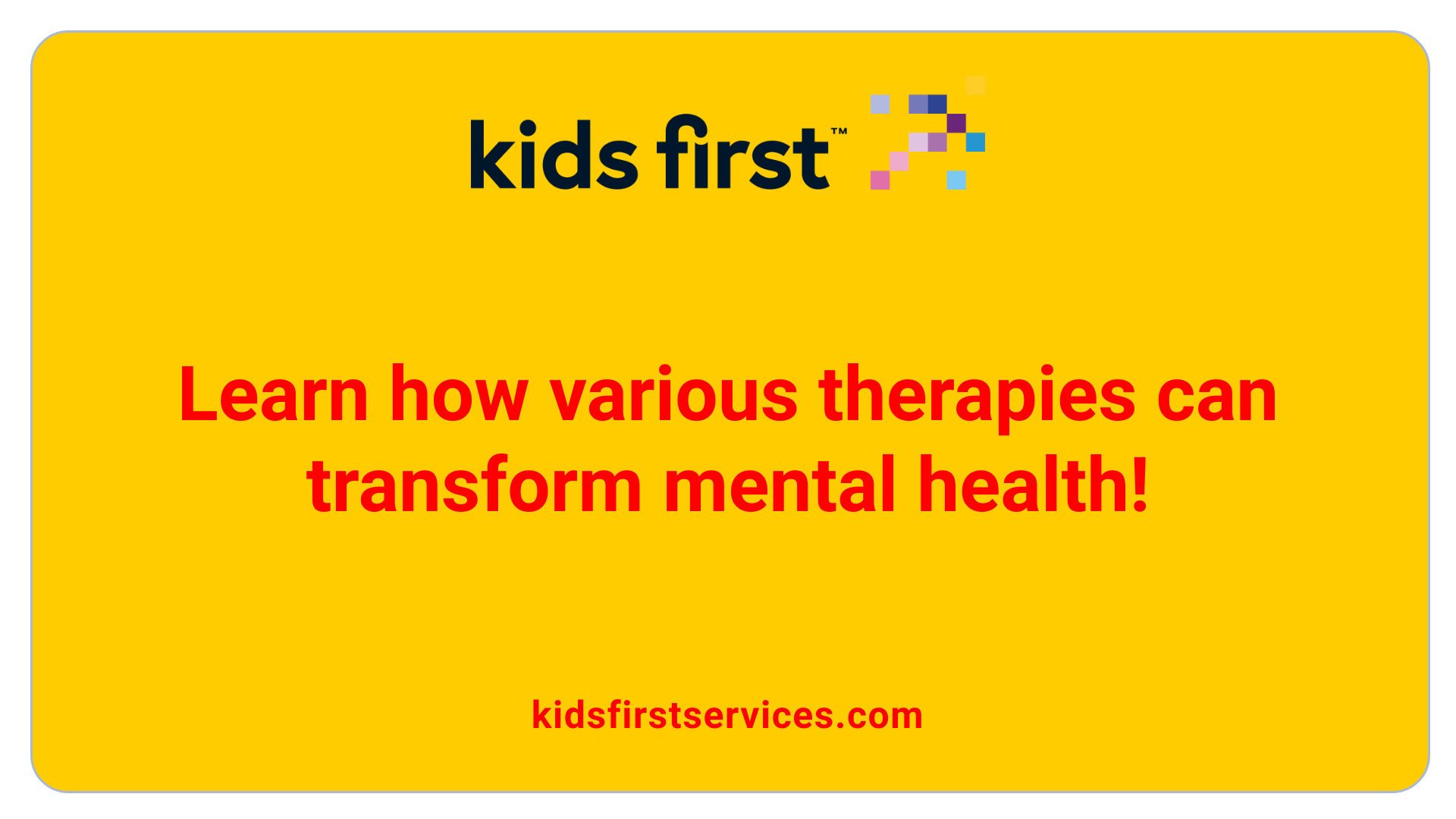
What are some examples of therapeutic approaches?
Examples of therapeutic approaches are diverse and tailored to meet individual client needs. Here are some notable ones:
- Cognitive Behavioral Therapy (CBT): Focuses on identifying and changing negative thought patterns linked to emotional and behavioral issues.
- Dialectical Behavior Therapy (DBT): A structured approach for managing intense emotions, particularly effective for borderline personality disorder.
- Interpersonal Therapy (IPT): Concentrates on improving interpersonal relationships to alleviate symptoms of depression and social anxiety.
- Mentalization-Based Therapy (MBT): Enhances self-awareness by helping clients understand their thoughts and emotions, beneficial for borderline personality disorder.
- Psychodynamic Therapy: Investigates how past experiences affect current behavior and emotional challenges.
- Behavioral Therapy: Aims to change negative behaviors through methods like exposure therapy, which gradually introduces clients to their fears.
- Humanistic Therapy: Encourages personal growth and self-acceptance through client-centered techniques.
- Acceptance and Commitment Therapy (ACT): Utilizes mindfulness strategies to foster acceptance of negative feelings and encouragement to pursue aligned actions.
- Family Therapy: Addresses relationship dynamics and improves communication within family units.
- Group Therapy: Creates a supportive environment where individuals can share experiences and gain insights from peers.
- Integrative Therapy: Combines elements from various therapeutic models to create personalized treatment plans.
Impact on mental health treatment
The impact of these therapeutic approaches on mental health is significant. Research indicates that evidence-based therapies lead to better treatment outcomes, demonstrating higher efficacy in addressing conditions such as anxiety, depression, PTSD, and relationship issues. With a strong foundation in psychological principles, therapies like CBT and DBT are proven to facilitate coping mechanisms and emotional regulation.
Furthermore, the therapist-client relationship plays a crucial role in successful therapy. Factors such as empathy, a strong therapeutic alliance, and a shared understanding of treatment goals significantly contribute to positive results across different approaches. This highlights the importance of not only selecting an effective therapeutic model but also ensuring a compatible rapport between client and therapist.
The diversity in therapeutic approaches provides flexibility and adaptability in treatment plans. As client needs vary, integrating multiple techniques can foster a holistic recovery process, addressing not only symptoms but also underlying emotional and relational issues. Overall, the right therapeutic approach can empower individuals, enhancing their mental resilience and fostering sustainable well-being.
The Role of Evidence-Based Therapies
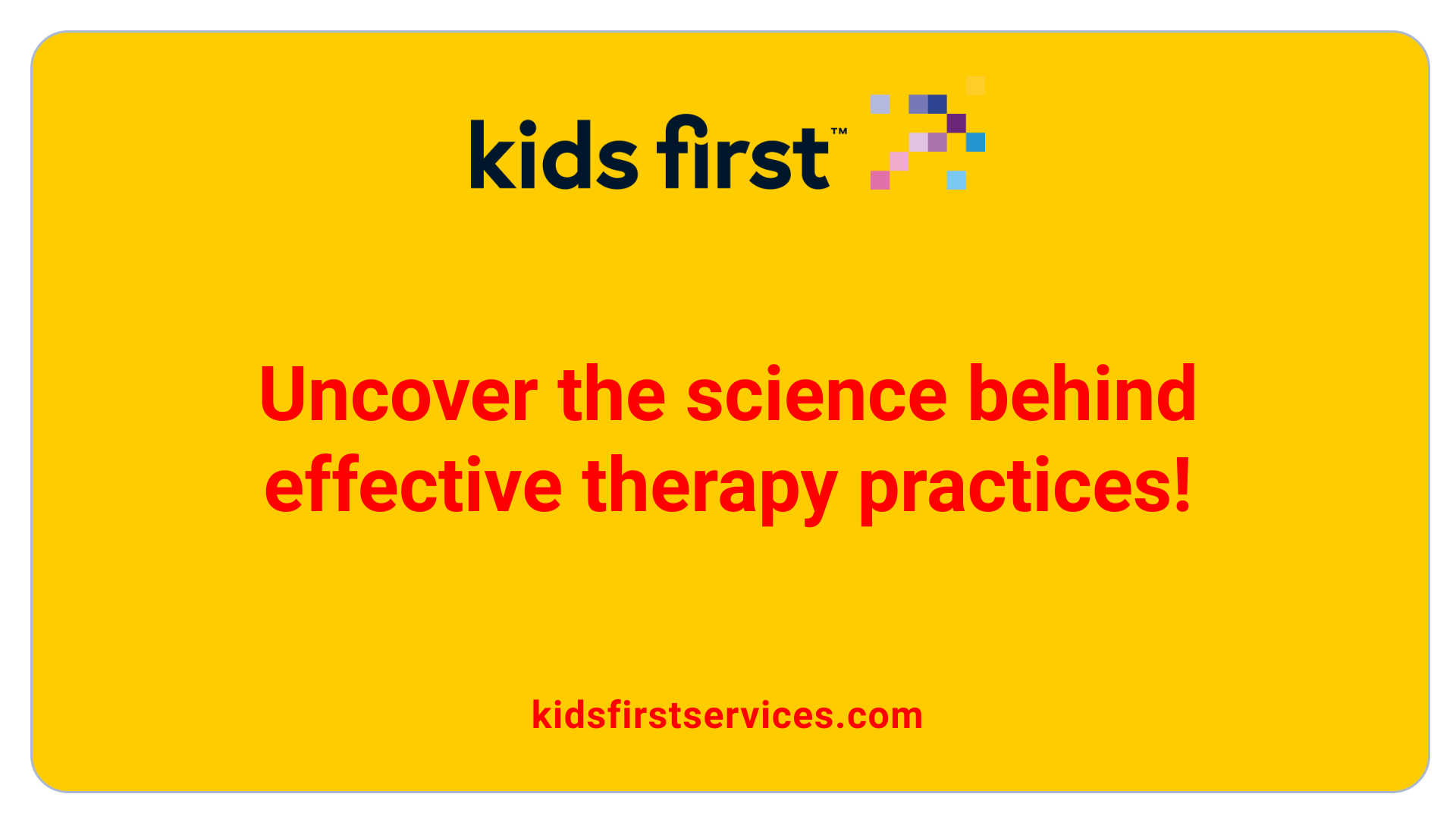
What are evidence-based therapies and their applications?
Evidence-based therapies represent a range of therapeutic approaches supported by rigorous scientific research, demonstrating their effectiveness in treating various mental health conditions. These therapies have been tested in controlled trials, ensuring that they deliver proven results in improving psychological well-being.
Among the most notably effective therapies are:
- Cognitive Behavioral Therapy (CBT): Focuses on altering negative thought patterns and behaviors, making it particularly effective for mood disorders, anxiety disorders, and even eating disorders.
- Dialectical Behavior Therapy (DBT): An evolution of CBT, DBT is tailored for individuals with Borderline Personality Disorder and focuses on emotional regulation, interpersonal effectiveness, and mindfulness techniques.
- Eye Movement Desensitization and Reprocessing (EMDR): Primarily used for PTSD, this therapy involves guiding patients through eye movements while recalling distressing memories, facilitating the processing of trauma.
- Exposure Therapy: A specialized form of CBT that gradually exposes individuals to feared stimuli, proving effective for phobias and PTSD.
- Interpersonal Therapy (IPT): A relationship-focused therapy that aims to improve interpersonal dynamics, alleviating symptoms of depression and social anxiety.
Beyond these approaches, therapies like Motivational Enhancement Therapy (MET) target addiction issues, whereas Family Therapy addresses communication and conflict within family units to enhance overall mental health. This variety underscores the adaptability of evidence-based therapies to suit the individual needs of those facing mental health challenges.
Application in mental health treatment
The application of evidence-based therapies has vastly improved mental health treatment, as they prioritize patient outcomes through validated methodologies. By integrating scientifically-backed strategies, psychologists can formulate tailored treatment plans that meet the nuanced needs of their clients.
For instance, individuals dealing with anxiety might benefit significantly from CBT, targeting dysfunctional thinking patterns that exacerbate their symptoms. Meanwhile, those experiencing relationship difficulties may find IPT or family therapy particularly helpful in navigating and improving their interpersonal relationships.
Research indicates that sessions built upon established methods contribute to higher quality care. Notably, evidence-based therapies often emphasize essential ingredients for effective treatment, such as empathy from therapists, strong therapeutic alliances, and mutual agreement on therapy goals.
Adopting these well-established therapies fosters accountability in treatment, offering clients a sense of control over their mental health journeys and enhancing their overall therapeutic experiences.
Three Main Counseling Models in Depth
What are the three main counseling models?
The three main counseling models are Psychodynamic, Person-centered, and Cognitive-behavioral therapy (CBT). Each model offers distinct theoretical foundations and practical applications to support clients' mental health journeys.
Psychodynamic Therapy
Rooted in the theories of Sigmund Freud, psychodynamic therapy dives deep into understanding how unconscious thoughts and childhood experiences shape current behaviors. Therapists use techniques like free association, where clients freely share thoughts, and dream analysis, to uncover hidden aspects of their psyche. This approach is particularly effective for treating issues like depression, anxiety, and PTSD, as it encourages individuals to explore and alter deep-seated emotional conflicts.
Person-centered Therapy
Developed by Carl Rogers, person-centered therapy emphasizes the therapeutic relationship as a transformative tool for clients. This model hinges on providing unconditional positive regard, empathy, and congruence—the therapist’s authenticity. It supports clients in reaching their full potential and engaging in self-exploration, which fosters meaningful change. It proves beneficial for individuals facing self-esteem challenges and existential dilemmas, promoting personal growth as they navigate their internal landscapes.
Cognitive-Behavioral Therapy (CBT)
CBT, pioneered by Albert Ellis and Aaron Beck, focuses on the interplay between thoughts, feelings, and behaviors. It operates on the premise that negative thought patterns can lead to emotional distress. Therapists guide clients in identifying these distortions and replacing them with healthier thoughts through structured exercises and tasks. This evidence-based approach is widely utilized for anxiety, depression, and PTSD, equipping clients with practical tools to manage their mental health effectively.
| Counseling Model | Theoretical Foundation | Practical Application |
|---|---|---|
| Psychodynamic Therapy | Freud's theory of the unconscious | Free association, dream analysis |
| Person-centered Therapy | Carl Rogers' concepts of empathy | Unconditional positive regard, self-exploration |
| Cognitive-behavioral Therapy (CBT) | Ellis and Beck's cognitive distortions | Task assignments to change negative patterns |
Application of Various Therapies in Mental Health
How do different types of therapy apply to mental health?
Different therapies target specific mental health issues using tailored techniques that promote healing and personal growth. For instance, Psychodynamic therapy emphasizes the understanding of unconscious thoughts and past experiences to uncover emotional conflicts that influence current behavior. It is particularly effective for treating conditions such as depression and anxiety, where understanding root causes is crucial.
Cognitive Behavioral Therapy (CBT) adopts a more structured approach. It aims to identify and change negative thought patterns that contribute to disorders like anxiety and depression. CBT teaches clients how to modify their thinking and behavior, making it one of the most widely used therapies in various settings.
On the other hand, Humanistic therapy focuses on facilitating self-exploration and personal growth. This approach encourages individuals to recognize their potential for positive change, honing in on self-acceptance, relationship-building, and overall well-being, thus proving beneficial for those struggling with issues of self-esteem and relational difficulties.
Moreover, Eclectic Therapy harnesses the strengths of multiple therapeutic modalities. This integrative approach allows therapists to adapt their methods to meet clients' unique needs, which can enhance treatment flexibility and effectiveness across a broad range of mental health conditions.
Ultimately, the selection of a therapeutic approach depends on the specific challenges faced by the client. Various therapies, from traditional methods like psychoanalysis to modern strategies such as mindfulness-based therapies, showcase diverse applications in treating mental health issues. Each method contributes uniquely to fostering emotional healing and personal development in individuals, illustrating an essential aspect of effective therapy practices.
Implementing Evidence-Based Psychotherapy
What are the advantages and challenges of implementing evidence-based psychotherapy?
Evidence-based psychotherapy, especially cognitive behavioral therapy (CBT), presents numerous advantages. It is widely recognized for its proven effectiveness in treating various mental health conditions, such as depression, anxiety, and PTSD. CBT is structured and goal-oriented, enabling individuals to work collaboratively with their therapists to develop essential coping skills. This approach not only assists in improving emotional regulation but also equips clients with practical strategies for life challenges.
Additionally, evidence-based therapies often have a robust foundation in research, leading to higher quality care and accountability within therapeutic practices. They provide clients with a clear understanding of what to expect, often resulting in increased engagement in the therapy process.
However, there are notable challenges in the implementation of these therapies. One major issue is the limited availability of trained therapists, which can severely restrict access to effective treatments for many individuals. This shortage can lead to longer wait times for therapy, affecting those who may be in urgent need of assistance.
While evidence-based practices like CBT can be tailored to meet individual needs, achieving a truly personalized approach in practice can be complex. Furthermore, the emotional distress that may arise during therapy sessions underscores the necessity of establishing and maintaining a strong therapist-client relationship. This rapport is crucial in navigating challenges and ensuring clients feel supported throughout their therapeutic journey.
Summary of Key Points
| Aspect | Details |
|---|---|
| Advantages | Proven effectiveness, structured approach, improvement of coping skills. |
| Challenges | Limited trained therapists, difficulty in personalizing treatment, emotional distress management. |
| Importance of therapist-client relationship | Essential for client support and effective navigation of therapeutic challenges. |
Exploring Collaborative Therapy Brains
Blending Approaches in Holistic Therapy
Integrative or holistic therapy emphasizes tailoring treatment by combining various therapeutic approaches to fit individual client needs. This method recognizes that there isn't a one-size-fits-all solution; people may respond better when therapies are blended. For example, a therapist might combine cognitive-behavioral therapy (CBT) with humanistic therapy techniques to enhance personal growth and facilitate cognitive restructuring.
Some popular combinations include:
- CBT + Mindfulness: This can assist clients in recognizing and altering negative thinking patterns while promoting present-moment awareness.
- DBT + Humanistic: Merging emotional regulation with a focus on individual strengths fosters acceptance and self-awareness.
- EMDR + Psychodynamic: This combination helps clients process traumatic memories by connecting them to their unconscious motivations and historical context.
Collaboration in Client-Centered Treatments
Client-centered therapy emphasizes collaboration between the therapist and the client. In this model, the therapist provides a supportive environment free of judgment, allowing clients to explore their thoughts and emotions. Clients are encouraged to take an active role in their therapy journey. This collaboration aids in creating a strong therapeutic alliance, which has shown to improve outcomes across various mental health issues.
Key features of collaborative client-centered treatments include:
- Empowerment: Clients are encouraged to voice their goals and perceptions, leading to personalized therapy.
- Empathy: The therapist actively listens and engages with the client’s experiences, fostering a deeper understanding.
- Mutual Decision-Making: Clients and therapists work together to shape the therapy process, ensuring that treatment aligns with the client's values and preferences.
Holistic and collaborative approaches not only enhance engagement but also contribute positively to therapeutic outcomes.
Psychoanalysis and Psychodynamic Therapies
Historical Context of Psychoanalysis
Psychoanalysis, founded by Sigmund Freud in the late 19th century, revolutionized the understanding of human psychology by focusing on the unconscious mind. Freud proposed that our unconscious thoughts and feelings significantly influence our behaviors, often manifesting as psychological issues. This theory emerged from his work with patients suffering from hysteria and neuroses, leading to the development of techniques like free association and dream analysis, which aimed to uncover hidden motivations behind troubling behaviors.
The historical impact of psychoanalysis reverberated through the 20th century, birthing various schools of thought within psychodynamic therapy. Researchers and clinicians expanded upon Freud's ideas, integrating new understandings of human relationships, object relations, and attachment.
Contemporary Psychodynamic Applications
Today, psychodynamic therapy retains relevance as a method to address complex emotional issues. It involves understanding how unresolved unconscious conflicts stemming from childhood experiences impact current behaviors and emotional states. This therapeutic approach is particularly effective for clients struggling with anxiety, depression, and relationship challenges.
Contemporary psychodynamic therapy emphasizes the establishment of a strong therapeutic alliance. Therapists help clients gain insights into their feelings and experiences while fostering a safe environment for self-exploration. Techniques such as interpretation of emotional responses, exploring past relationships, and recognizing patterns in behavior are core to the practice.
Patients often experience transformative changes, as they identify unconscious influences and develop healthier coping mechanisms. Current psychodynamic approaches thus validate the legacy of Freud while adapting to modern therapeutic needs, highlighting their continued significance in mental health treatment.
| Therapeutic Approach | Key Focus | Contextual Use |
|---|---|---|
| Psychoanalysis | Unconscious motivations and early experiences | Beneficial for understanding deep-rooted emotional issues |
| Psychodynamic Therapy | Current behavior influenced by past experiences | Useful for anxiety, depression, and relationship conflicts |
Cognitive and Behavioral Strategies
Cognitive Restructuring Techniques
Cognitive restructuring is a core component of cognitive therapy that aims to identify and challenge negative thought patterns. This approach often incorporates the following techniques:
- Thought Records: Clients document their thoughts and associated emotions, allowing therapists to help them identify distortions.
- Challenge Negative Beliefs: Therapists assist clients in questioning the validity of their negative thoughts, encouraging them to consider alternative, more balanced perspectives.
- Cognitive Behavioral Homework: Assignments outside of therapy sessions promote real-life practice of new skills and encourage reflection on thoughts and behaviors.
Behavioral Change Methods
Behavioral therapies focus on modifying harmful behaviors through various strategies. Common methods include:
- Operant Conditioning: This involves using rewards to reinforce desirable behaviors and consequences to discourage unwanted actions.
- Exposure Therapy: Gradually exposing clients to feared objects or situations can desensitize them, commonly used for phobias and PTSD.
- Behavioral Activation: Encouraging clients to engage in activities that align with their values, thus countering depression and fostering positive experiences.
- Skill Training: Clients learn specific skills to manage their emotions and improve interactions, such as social skills training.
Overview of Cognitive and Behavioral Techniques
| Technique Type | Specific Methods | Primary Focus |
|---|---|---|
| Cognitive Techniques | Thought Records, Challenging Beliefs | Changing negative thought patterns |
| Behavioral Techniques | Operant Conditioning, Exposure Therapy | Modifying harmful behaviors |
Cognitive and behavioral strategies play a vital role in therapeutic practices, helping clients develop healthier thinking and behavior patterns.
Humanistic and Existential Frameworks
Principles of Humanistic Therapy
Humanistic therapy is rooted in the belief that individuals possess the capacity for personal growth and self-acceptance. Key principles include:
- Client-Centered Approach: Developed by Carl Rogers, this approach emphasizes the client's perspective, allowing them to take charge of their healing process through an empathetic and supportive therapeutic environment.
- Unconditional Positive Regard: Therapists provide warm acceptance regardless of the client’s actions or thoughts, fostering a nonjudgmental space where clients can explore their feelings and experiences.
- Focus on Present: Humanistic therapy prioritizes individuals' current experiences and thoughts rather than dwelling on past events, encouraging clients to realize their potential and make rational decisions.
Humanistic approaches are widely applied to enhance self-esteem and address relationship challenges, significantly contributing to personal growth.
Existential Therapy's Focus on Meaning
Existential therapy delves into the complexities of human existence, addressing fundamental questions of meaning, freedom, and choice. Key points include:
- Exploration of Existence: This therapy aims to help clients confront existential concerns, such as life’s purpose and the inevitability of death, to foster deeper self-awareness and authenticity.
- Emphasis on Personal Responsibility: Individuals are encouraged to take ownership of their thoughts and actions, ultimately cultivating a sense of agency in their lives.
- Therapeutic Relationship: The bond between client and therapist is pivotal, promoting a safe exploration of life's challenges and existential dilemmas.
Together, humanistic and existential frameworks provide a comprehensive approach to therapy. They encourage individuals to pursue self-discovery, address emotional struggles, and find meaning in their experiences.
Comparative Table of Humanistic and Existential Therapy
| Aspect | Humanistic Therapy | Existential Therapy |
|---|---|---|
| Focus | Personal growth and self-acceptance | Meaning and existence |
| Core Technique | Client-centered therapy | Exploration of existential questions |
| Therapist's Role | Supportive and nonjudgmental | Engaging and thought-provoking |
| Key Principle | Unconditional positive regard | Emphasis on personal responsibility |
Therapies for Children and Adolescents
Tailored approaches for young clients
Therapies for children and adolescents often require specific adaptations to cater to their developmental stages and unique needs. Approaches such as Play Therapy provide a safe environment for children to express their feelings through play. This method can effectively address stress and behavioral issues, enabling young clients to articulate thoughts they might struggle to verbalize in traditional settings.
Moreover, Trauma-Focused Cognitive Behavioral Therapy (TF-CBT) is particularly suited for youth dealing with PTSD, anxiety, or depression. TF-CBT integrates cognitive-behavioral techniques tailored to children, helping reshape negative perceptions related to traumatic experiences.
Addressing developmental needs
Children and adolescents often face different challenges compared to adults, and their therapies must reflect this. Creative Arts Therapy, for instance, allows young individuals to explore emotions through various expressive mediums, fostering emotional expression and healing.
Family Therapy is also beneficial, engaging multiple family members to improve relationships and communication, which can greatly influence a young person’s mental health.
To further illustrate the diverse approaches available for children and adolescents, the following table summarizes effective therapy types:
| Therapy Type | Focus Area | Benefits |
|---|---|---|
| Play Therapy | Emotional expression | Helps children express feelings through play |
| Trauma-Focused CBT | Trauma and PTSD | Reshapes negative thinking about traumatic events |
| Creative Arts Therapy | Emotional and creative expression | Facilitates healing through creative mediums |
| Family Therapy | Relationships and communication | Enhances family dynamics impacting mental health |
| Group Therapy | Peer support | Provides a supportive environment for sharing |
These carefully constructed therapeutic approaches recognize the distinctive developmental needs of children and adolescents, ensuring effective support throughout different life challenges.
Addressing Trauma through Specialized Therapies
Trauma-Focused Interventions
Trauma-focused therapies specifically target the psychological and emotional aftermath of traumatic experiences. Several approaches have been developed to help individuals process their distressing experiences effectively. These include:
- Trauma-Focused Cognitive Behavioral Therapy (TF-CBT): This method combines cognitive therapy principles with trauma-sensitive interventions, making it particularly effective for children and adolescents dealing with PTSD, depression, and anxiety.
- Eye Movement Desensitization and Reprocessing (EMDR): This technique addresses trauma by guiding clients to recall traumatic memories while performing specific eye movements, aiming to reduce the emotional charge associated with those memories. Although some mechanisms remain debated, research shows that EMDR can significantly alleviate symptoms of PTSD.
- Accelerated Experiential Dynamic Psychotherapy (AEDP): This therapy emphasizes emotional processes and the therapeutic relationship, which fosters healing through experiential therapy encounters.
Effectiveness of EMDR and Others
Research supports the efficacy of these trauma-focused therapies. For instance, EMDR has shown strong outcomes in reducing PTSD symptoms and is recognized for its ability to facilitate faster processing of traumatic memories compared to traditional talk therapies. Similarly, TF-CBT has established effectiveness in helping children cope with the effects of trauma by modifying unhelpful beliefs related to the event.
In addition to EMDR and TF-CBT, mindfulness-based approaches like Mindfulness-Based Cognitive Therapy (MBCT) have also proven effective in trauma recovery by promoting present-moment awareness, which can reduce anxiety and emotional distress.
| Therapy Type | Focus | Target Audience | Key Benefits |
|---|---|---|---|
| Trauma-Focused Cognitive Behavioral Therapy | Cognitive and behavioral interventions for trauma | Children and adolescents | Effective for PTSD, depression, anxiety |
| Eye Movement Desensitization and Reprocessing (EMDR) | Processing traumatic memories through eye movements | Adults and adolescents | Rapid symptom relief from PTSD and trauma |
| Accelerated Experiential Dynamic Psychotherapy (AEDP) | Emotional healing through experiential engagement | Adults with trauma | Builds emotional resilience and connection |
| Mindfulness-Based Cognitive Therapy (MBCT) | Mindfulness techniques to reduce recurrence | General mental health issues | Helps manage anxiety and depression |
These specialized therapies are integral to addressing the unique needs of trauma survivors, providing effective routes to healing and recovery.
Conclusion on Effective Therapy Models
As mental health awareness continues to grow, so does the imperative for effective therapy models that can provide tangible benefits for diverse psychological conditions. Through a detailed exploration of the types of psychotherapy, their applications, and evidence-based practices, this article underscores the importance of informed decisions when choosing therapeutic approaches. By prioritizing personal needs, fostering strong therapeutic relationships, and staying abreast of proven practices, both therapists and clients can ensure meaningful progress in mental health treatment. Ultimately, the landscape of psychotherapy offers a wealth of options to suit varying therapeutic goals and individual requirements, positioning patients toward improved well-being and recovery.
References
- Different approaches to psychotherapy
- Types of Therapy: Different Types of Approaches and How They Work
- Types of Therapy | Psychology Today
- Types of therapy for anxiety, depression, trauma, PTSD, and more
- Types of Therapy: An A to Z List of Your Options - Verywell Mind
- 5 Types of Therapy: Which Is Best for You?
- Different Types of Therapy [Psychotherapy]: Which is Best For You?
- 12 Popular Counseling Approaches to Consider - Positive Psychology
- Therapy Types and Modalities | Psychology Today
- Types of Therapy



